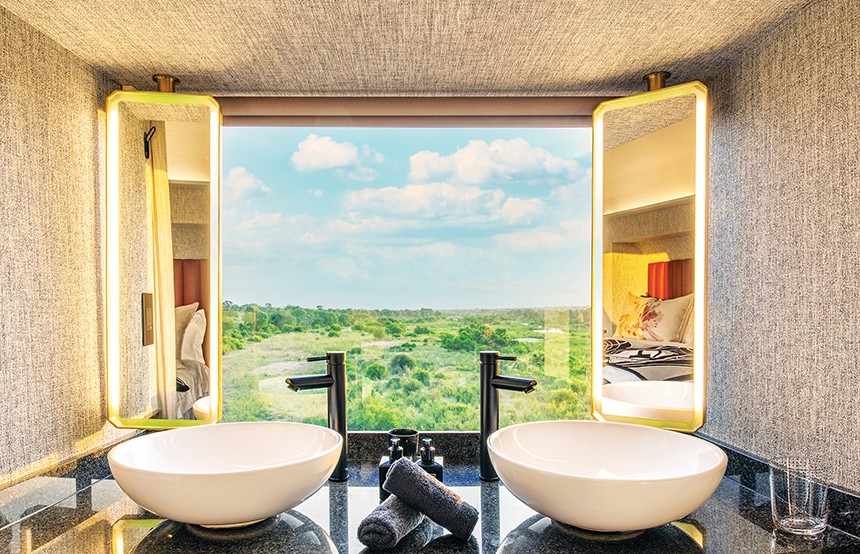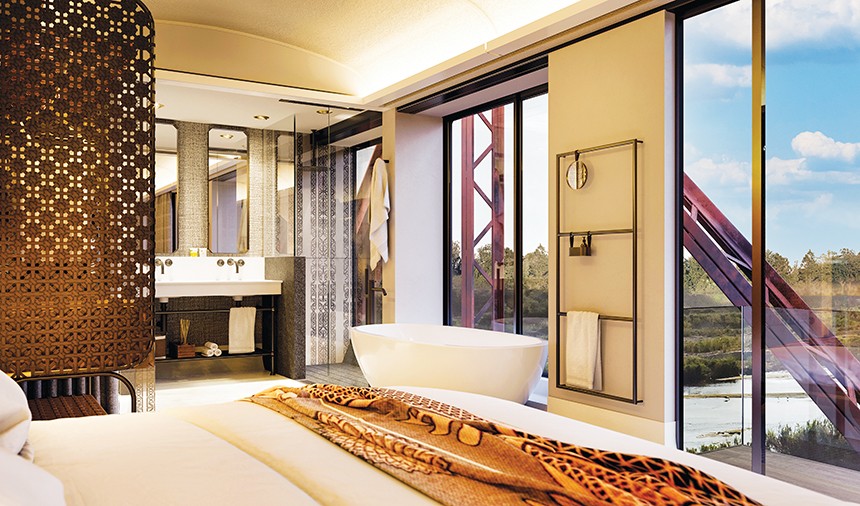Masterpiece Moments
Every room has a unique art piece done by visual artist Sakhile Cebekhulu, who Barnes, an avid art collector, says is “making waves across the country.” Cebekhulu, founder of the design firm StudioS, typically explores the tensions between growing up as a city boy in Johannesburg and his ancient Zulu ancestry. For Shalati, he created 22 pieces of art based on photographs of the Sabie River and the Selati bridge, each with a unique vantage point. He also hand-embroidered each photograph. (Embroidery plays a prominent role in Zulu attire: It adorns the striking headdress, known as isicholo, worn by married Zulu women.) Comfortable pale woven chairs were created by Alifurn, a family-owned company that produces its furniture entirely in Ballito, South Africa. “This strand of employing locals is something that weaves throughout the project,” says Kleinloog. Draped softly over beds and chairs are blankets that reflect Basotho culture. These blankets were done by Bonolo Helen Chepape, a young graphic designer from Rustenburg, who started the well-known homeware brand, Lulasclan.
“The Xhosa and Swahili cultures had a belief that when a couple gets married, the husband wraps his new wife in a blanket, and she presents her husband with a blanket to show that she is committed to him. It’s unique to our part of the world.” Chepape took inspiration from the train’s surroundings and blended those colors into her pieces.
South African interior designer Itumeleng Makgakga used a linear technique to capture details that portray African life with a unique sense of pride and reverence. Her illustrations for Shalati embrace and celebrate South African culture by portraying past archytpes of beauty and art with a throroughly odern lens. This is not your typical “pretty vase positioned on a marble table” design: Shalati begs the guest to look deeper.








